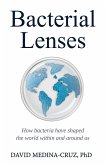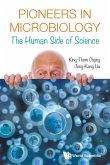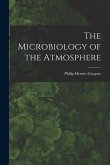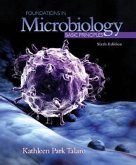- Broschiertes Buch
- Merkliste
- Auf die Merkliste
- Bewerten Bewerten
- Teilen
- Produkt teilen
- Produkterinnerung
- Produkterinnerung
All experiments are correlated to Nester's "Microbiology: A Human Perspective, 5/e," but can be used with any non-majors/allied health microbiology textbook..
Andere Kunden interessierten sich auch für
![Microbiology Experiments: A Health Science Perspective Microbiology Experiments: A Health Science Perspective]() John KleynMicrobiology Experiments: A Health Science Perspective117,99 €
John KleynMicrobiology Experiments: A Health Science Perspective117,99 €![Laboratory Exercises in Microbiology Laboratory Exercises in Microbiology]() John P. HarleyLaboratory Exercises in Microbiology115,99 €
John P. HarleyLaboratory Exercises in Microbiology115,99 €![Annual Editions: Microbiology [With Access Code] Annual Editions: Microbiology [With Access Code]]() Govindan BrindaAnnual Editions: Microbiology [With Access Code]64,99 €
Govindan BrindaAnnual Editions: Microbiology [With Access Code]64,99 €![Bacterial Lenses Bacterial Lenses]() David Medina CruzBacterial Lenses17,99 €
David Medina CruzBacterial Lenses17,99 €![PIONEERS IN MICROBIOLOGY PIONEERS IN MICROBIOLOGY]() King-Thom Chung & Jong-Kang LiuPIONEERS IN MICROBIOLOGY55,99 €
King-Thom Chung & Jong-Kang LiuPIONEERS IN MICROBIOLOGY55,99 €![The Microbiology of the Atmosphere The Microbiology of the Atmosphere]() Philip Herries GregoryThe Microbiology of the Atmosphere26,99 €
Philip Herries GregoryThe Microbiology of the Atmosphere26,99 €![Foundations in Microbiology Foundations in Microbiology]() Kathleen Park TalaroFoundations in Microbiology153,99 €
Kathleen Park TalaroFoundations in Microbiology153,99 €-
-
-
All experiments are correlated to Nester's "Microbiology: A Human Perspective, 5/e," but can be used with any non-majors/allied health microbiology textbook..
Hinweis: Dieser Artikel kann nur an eine deutsche Lieferadresse ausgeliefert werden.
Hinweis: Dieser Artikel kann nur an eine deutsche Lieferadresse ausgeliefert werden.
Produktdetails
- Produktdetails
- Verlag: McGraw Hill LLC
- Revised
- Seitenzahl: 352
- Erscheinungstermin: Oktober 2005
- Englisch
- Abmessung: 274mm x 216mm x 13mm
- Gewicht: 735g
- ISBN-13: 9780072999495
- ISBN-10: 0072999497
- Artikelnr.: 21718878
- Herstellerkennzeichnung
- Produktsicherheitsverantwortliche/r
- Europaallee 1
- 36244 Bad Hersfeld
- gpsr@libri.de
- Verlag: McGraw Hill LLC
- Revised
- Seitenzahl: 352
- Erscheinungstermin: Oktober 2005
- Englisch
- Abmessung: 274mm x 216mm x 13mm
- Gewicht: 735g
- ISBN-13: 9780072999495
- ISBN-10: 0072999497
- Artikelnr.: 21718878
- Herstellerkennzeichnung
- Produktsicherheitsverantwortliche/r
- Europaallee 1
- 36244 Bad Hersfeld
- gpsr@libri.de
Part One: Basic Microbiology Introduction to Microbiology Exercise: 1
Ubiquity of Microorganisms Exercise: 2 Bright-Field Light Microscopy,
Including History and Working Principles Exercise: 3 Microscopic
(Bright-Field and Dark-Field) Determination of Cell Motility, Form, and
Viability Using Wet Mount and Hanging Drop Preparations Introduction to
Staining of Microorganisms Exercise: 4 Simple Stains: Positive and Negative
Stains Exercise: 5 Differential and Special Stains Introduction to
Microbial Growth Exercise: 6 Pure Culture and Aseptic Technique Exercise: 7
Chemically Defined, Complex, Selective, and Differential Media Exercise: 8
Quantification of Microorganisms Introduction to the Environment and
Microbial Growth Exercise: 9 Aerobic and Anaerobic Growth Exercise: 10 The
Effect of Incubation Temperature on Generation Time Introduction to Control
of Microbial Growth Exercise: 11 Moist and Dry Heat Sterilization: Thermal
Death Point and Thermal Death Time Exercise: 12 Control of Microbial Growth
with Ultraviolet Light Exercise: 13 Osmotic Pressure, and Its Effect on
Rate and Amount of Microbial Growth Exercise: 14 Antiseptics and
Antibiotics Introduction to Microbial Genetics Exercise: 15 Selection of
Bacterial Mutants Resistant to Antibiotics Exercise: 16 Transformation: A
Form of Genetic Recombination Exercise: 17 Bacterial Conjugation Exercise:
18 Gene Regulation: Induction and Catabolite Repression Part Two: The Other
Microbial World Introduction to the Other Microbial World Exercise: 19
Microscopic Identification of Fungi Exercise: 20 Parasitology: Protozoa and
Helminths Exercise: 21 Titering Prokaryotic Viruses Part Three: Microbes
and Humans Introduction to Medical Microbiology Exercise: 22 Normal Skin
Flora Exercise: 23 Respiratory Microorganisms Exercise: 24 Identification
of Enteric Gram-Negative Rods Exercise: 25 Clinical Unknown Identification
Part Four: Immunology Introduction to Some Immunological Principles and
Techniques Exercise: 26 Differential White Blood Cell Stains Exercise: 27
Lysozyme, an Enzymatic Form of Natural Resistance Exercise: 28 Lancefield
Grouping of Pathogenic Streptococci with a Latex Slide Agglutination Test
Exercise: 29 Use of an Enzyme-Linked Immunosorbent Assay (ELISA) Test for
Coccidioides Immitis Identification Exercise: 30 An Ouchterlony Double
Immunodiffusion Test for Coccidioides Immitis Identification Part Five:
Public Health Introduction to the Prevention and Control of Communicable
Diseases Exercise: 31 Epidemiology: A Staphylococcus Carrier Study
Exercise: 32 Bacteriological Examination of Water: Multiple-Tube
Fermentation and Membrane Filter Techniques Part Six: Applications of
Biotechnology Introduction to Biotechnology Exercise: 33 Identifying DNA
with Restriction Enzymes Exercise: 34 Identification of Bacteria Using the
Ribosomal Data Project Part Seven: Projects Introduction to the Individual
Projects Exercise: 35 Hydrocarbon-Degrading Bacteria, Cleaning Up After Oil
Spills Exercise: 36 Luminescent Bacteria: Bacteria That Produce Light
Exercise: 37 Methylotrophs, Organisms That Grow on One-Carbon Compounds
Exercise: 38 Deinococcus, Bacteria with Out-Of-This-World Capabilities
Appendices 1. Living Microorganisms (Bacteria, Fungi, Protozoa, and
Helminths) Chosen for Study in this Manual 2. Dilution Practice Problems 3.
Metric System, Use of with Conversions to the English System of Measurement
4. Alternative Procedures 5. Use of the Ocular Micrometer for Measurement
of Relative and Absolute Cell Size 6. Use of the Hemocytometer for
Determining Total Cell Number in a Liquid Suspension 7. Preparation of
Covered Slide Cultures for Study of Intact Structure of a Mold Thallus 8.
Additional Reading
Ubiquity of Microorganisms Exercise: 2 Bright-Field Light Microscopy,
Including History and Working Principles Exercise: 3 Microscopic
(Bright-Field and Dark-Field) Determination of Cell Motility, Form, and
Viability Using Wet Mount and Hanging Drop Preparations Introduction to
Staining of Microorganisms Exercise: 4 Simple Stains: Positive and Negative
Stains Exercise: 5 Differential and Special Stains Introduction to
Microbial Growth Exercise: 6 Pure Culture and Aseptic Technique Exercise: 7
Chemically Defined, Complex, Selective, and Differential Media Exercise: 8
Quantification of Microorganisms Introduction to the Environment and
Microbial Growth Exercise: 9 Aerobic and Anaerobic Growth Exercise: 10 The
Effect of Incubation Temperature on Generation Time Introduction to Control
of Microbial Growth Exercise: 11 Moist and Dry Heat Sterilization: Thermal
Death Point and Thermal Death Time Exercise: 12 Control of Microbial Growth
with Ultraviolet Light Exercise: 13 Osmotic Pressure, and Its Effect on
Rate and Amount of Microbial Growth Exercise: 14 Antiseptics and
Antibiotics Introduction to Microbial Genetics Exercise: 15 Selection of
Bacterial Mutants Resistant to Antibiotics Exercise: 16 Transformation: A
Form of Genetic Recombination Exercise: 17 Bacterial Conjugation Exercise:
18 Gene Regulation: Induction and Catabolite Repression Part Two: The Other
Microbial World Introduction to the Other Microbial World Exercise: 19
Microscopic Identification of Fungi Exercise: 20 Parasitology: Protozoa and
Helminths Exercise: 21 Titering Prokaryotic Viruses Part Three: Microbes
and Humans Introduction to Medical Microbiology Exercise: 22 Normal Skin
Flora Exercise: 23 Respiratory Microorganisms Exercise: 24 Identification
of Enteric Gram-Negative Rods Exercise: 25 Clinical Unknown Identification
Part Four: Immunology Introduction to Some Immunological Principles and
Techniques Exercise: 26 Differential White Blood Cell Stains Exercise: 27
Lysozyme, an Enzymatic Form of Natural Resistance Exercise: 28 Lancefield
Grouping of Pathogenic Streptococci with a Latex Slide Agglutination Test
Exercise: 29 Use of an Enzyme-Linked Immunosorbent Assay (ELISA) Test for
Coccidioides Immitis Identification Exercise: 30 An Ouchterlony Double
Immunodiffusion Test for Coccidioides Immitis Identification Part Five:
Public Health Introduction to the Prevention and Control of Communicable
Diseases Exercise: 31 Epidemiology: A Staphylococcus Carrier Study
Exercise: 32 Bacteriological Examination of Water: Multiple-Tube
Fermentation and Membrane Filter Techniques Part Six: Applications of
Biotechnology Introduction to Biotechnology Exercise: 33 Identifying DNA
with Restriction Enzymes Exercise: 34 Identification of Bacteria Using the
Ribosomal Data Project Part Seven: Projects Introduction to the Individual
Projects Exercise: 35 Hydrocarbon-Degrading Bacteria, Cleaning Up After Oil
Spills Exercise: 36 Luminescent Bacteria: Bacteria That Produce Light
Exercise: 37 Methylotrophs, Organisms That Grow on One-Carbon Compounds
Exercise: 38 Deinococcus, Bacteria with Out-Of-This-World Capabilities
Appendices 1. Living Microorganisms (Bacteria, Fungi, Protozoa, and
Helminths) Chosen for Study in this Manual 2. Dilution Practice Problems 3.
Metric System, Use of with Conversions to the English System of Measurement
4. Alternative Procedures 5. Use of the Ocular Micrometer for Measurement
of Relative and Absolute Cell Size 6. Use of the Hemocytometer for
Determining Total Cell Number in a Liquid Suspension 7. Preparation of
Covered Slide Cultures for Study of Intact Structure of a Mold Thallus 8.
Additional Reading
Part One: Basic Microbiology Introduction to Microbiology Exercise: 1
Ubiquity of Microorganisms Exercise: 2 Bright-Field Light Microscopy,
Including History and Working Principles Exercise: 3 Microscopic
(Bright-Field and Dark-Field) Determination of Cell Motility, Form, and
Viability Using Wet Mount and Hanging Drop Preparations Introduction to
Staining of Microorganisms Exercise: 4 Simple Stains: Positive and Negative
Stains Exercise: 5 Differential and Special Stains Introduction to
Microbial Growth Exercise: 6 Pure Culture and Aseptic Technique Exercise: 7
Chemically Defined, Complex, Selective, and Differential Media Exercise: 8
Quantification of Microorganisms Introduction to the Environment and
Microbial Growth Exercise: 9 Aerobic and Anaerobic Growth Exercise: 10 The
Effect of Incubation Temperature on Generation Time Introduction to Control
of Microbial Growth Exercise: 11 Moist and Dry Heat Sterilization: Thermal
Death Point and Thermal Death Time Exercise: 12 Control of Microbial Growth
with Ultraviolet Light Exercise: 13 Osmotic Pressure, and Its Effect on
Rate and Amount of Microbial Growth Exercise: 14 Antiseptics and
Antibiotics Introduction to Microbial Genetics Exercise: 15 Selection of
Bacterial Mutants Resistant to Antibiotics Exercise: 16 Transformation: A
Form of Genetic Recombination Exercise: 17 Bacterial Conjugation Exercise:
18 Gene Regulation: Induction and Catabolite Repression Part Two: The Other
Microbial World Introduction to the Other Microbial World Exercise: 19
Microscopic Identification of Fungi Exercise: 20 Parasitology: Protozoa and
Helminths Exercise: 21 Titering Prokaryotic Viruses Part Three: Microbes
and Humans Introduction to Medical Microbiology Exercise: 22 Normal Skin
Flora Exercise: 23 Respiratory Microorganisms Exercise: 24 Identification
of Enteric Gram-Negative Rods Exercise: 25 Clinical Unknown Identification
Part Four: Immunology Introduction to Some Immunological Principles and
Techniques Exercise: 26 Differential White Blood Cell Stains Exercise: 27
Lysozyme, an Enzymatic Form of Natural Resistance Exercise: 28 Lancefield
Grouping of Pathogenic Streptococci with a Latex Slide Agglutination Test
Exercise: 29 Use of an Enzyme-Linked Immunosorbent Assay (ELISA) Test for
Coccidioides Immitis Identification Exercise: 30 An Ouchterlony Double
Immunodiffusion Test for Coccidioides Immitis Identification Part Five:
Public Health Introduction to the Prevention and Control of Communicable
Diseases Exercise: 31 Epidemiology: A Staphylococcus Carrier Study
Exercise: 32 Bacteriological Examination of Water: Multiple-Tube
Fermentation and Membrane Filter Techniques Part Six: Applications of
Biotechnology Introduction to Biotechnology Exercise: 33 Identifying DNA
with Restriction Enzymes Exercise: 34 Identification of Bacteria Using the
Ribosomal Data Project Part Seven: Projects Introduction to the Individual
Projects Exercise: 35 Hydrocarbon-Degrading Bacteria, Cleaning Up After Oil
Spills Exercise: 36 Luminescent Bacteria: Bacteria That Produce Light
Exercise: 37 Methylotrophs, Organisms That Grow on One-Carbon Compounds
Exercise: 38 Deinococcus, Bacteria with Out-Of-This-World Capabilities
Appendices 1. Living Microorganisms (Bacteria, Fungi, Protozoa, and
Helminths) Chosen for Study in this Manual 2. Dilution Practice Problems 3.
Metric System, Use of with Conversions to the English System of Measurement
4. Alternative Procedures 5. Use of the Ocular Micrometer for Measurement
of Relative and Absolute Cell Size 6. Use of the Hemocytometer for
Determining Total Cell Number in a Liquid Suspension 7. Preparation of
Covered Slide Cultures for Study of Intact Structure of a Mold Thallus 8.
Additional Reading
Ubiquity of Microorganisms Exercise: 2 Bright-Field Light Microscopy,
Including History and Working Principles Exercise: 3 Microscopic
(Bright-Field and Dark-Field) Determination of Cell Motility, Form, and
Viability Using Wet Mount and Hanging Drop Preparations Introduction to
Staining of Microorganisms Exercise: 4 Simple Stains: Positive and Negative
Stains Exercise: 5 Differential and Special Stains Introduction to
Microbial Growth Exercise: 6 Pure Culture and Aseptic Technique Exercise: 7
Chemically Defined, Complex, Selective, and Differential Media Exercise: 8
Quantification of Microorganisms Introduction to the Environment and
Microbial Growth Exercise: 9 Aerobic and Anaerobic Growth Exercise: 10 The
Effect of Incubation Temperature on Generation Time Introduction to Control
of Microbial Growth Exercise: 11 Moist and Dry Heat Sterilization: Thermal
Death Point and Thermal Death Time Exercise: 12 Control of Microbial Growth
with Ultraviolet Light Exercise: 13 Osmotic Pressure, and Its Effect on
Rate and Amount of Microbial Growth Exercise: 14 Antiseptics and
Antibiotics Introduction to Microbial Genetics Exercise: 15 Selection of
Bacterial Mutants Resistant to Antibiotics Exercise: 16 Transformation: A
Form of Genetic Recombination Exercise: 17 Bacterial Conjugation Exercise:
18 Gene Regulation: Induction and Catabolite Repression Part Two: The Other
Microbial World Introduction to the Other Microbial World Exercise: 19
Microscopic Identification of Fungi Exercise: 20 Parasitology: Protozoa and
Helminths Exercise: 21 Titering Prokaryotic Viruses Part Three: Microbes
and Humans Introduction to Medical Microbiology Exercise: 22 Normal Skin
Flora Exercise: 23 Respiratory Microorganisms Exercise: 24 Identification
of Enteric Gram-Negative Rods Exercise: 25 Clinical Unknown Identification
Part Four: Immunology Introduction to Some Immunological Principles and
Techniques Exercise: 26 Differential White Blood Cell Stains Exercise: 27
Lysozyme, an Enzymatic Form of Natural Resistance Exercise: 28 Lancefield
Grouping of Pathogenic Streptococci with a Latex Slide Agglutination Test
Exercise: 29 Use of an Enzyme-Linked Immunosorbent Assay (ELISA) Test for
Coccidioides Immitis Identification Exercise: 30 An Ouchterlony Double
Immunodiffusion Test for Coccidioides Immitis Identification Part Five:
Public Health Introduction to the Prevention and Control of Communicable
Diseases Exercise: 31 Epidemiology: A Staphylococcus Carrier Study
Exercise: 32 Bacteriological Examination of Water: Multiple-Tube
Fermentation and Membrane Filter Techniques Part Six: Applications of
Biotechnology Introduction to Biotechnology Exercise: 33 Identifying DNA
with Restriction Enzymes Exercise: 34 Identification of Bacteria Using the
Ribosomal Data Project Part Seven: Projects Introduction to the Individual
Projects Exercise: 35 Hydrocarbon-Degrading Bacteria, Cleaning Up After Oil
Spills Exercise: 36 Luminescent Bacteria: Bacteria That Produce Light
Exercise: 37 Methylotrophs, Organisms That Grow on One-Carbon Compounds
Exercise: 38 Deinococcus, Bacteria with Out-Of-This-World Capabilities
Appendices 1. Living Microorganisms (Bacteria, Fungi, Protozoa, and
Helminths) Chosen for Study in this Manual 2. Dilution Practice Problems 3.
Metric System, Use of with Conversions to the English System of Measurement
4. Alternative Procedures 5. Use of the Ocular Micrometer for Measurement
of Relative and Absolute Cell Size 6. Use of the Hemocytometer for
Determining Total Cell Number in a Liquid Suspension 7. Preparation of
Covered Slide Cultures for Study of Intact Structure of a Mold Thallus 8.
Additional Reading

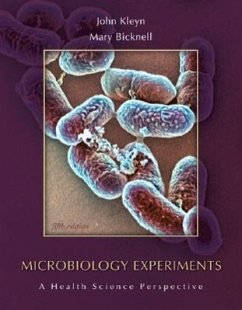
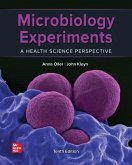
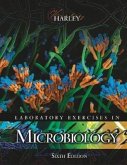
![Annual Editions: Microbiology [With Access Code] Annual Editions: Microbiology [With Access Code]](https://bilder.buecher.de/produkte/26/26882/26882889m.jpg)
